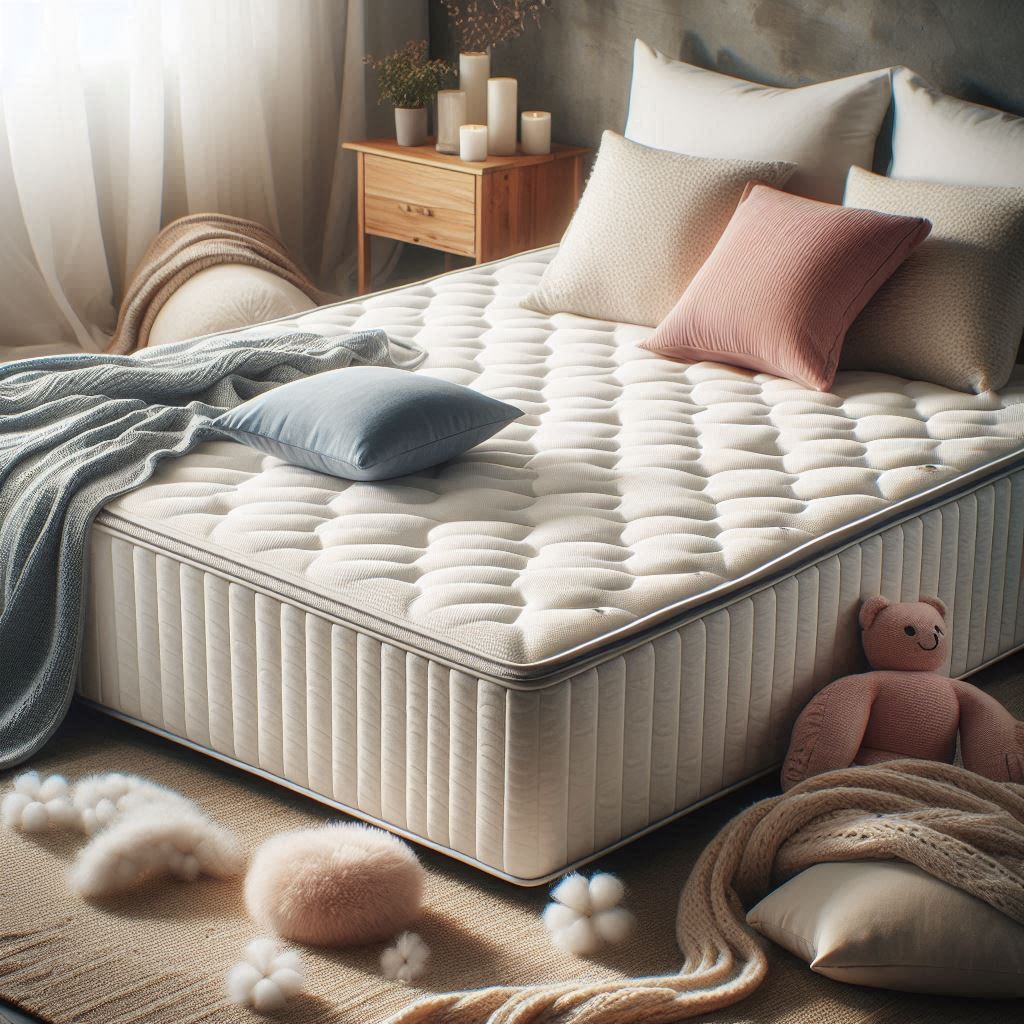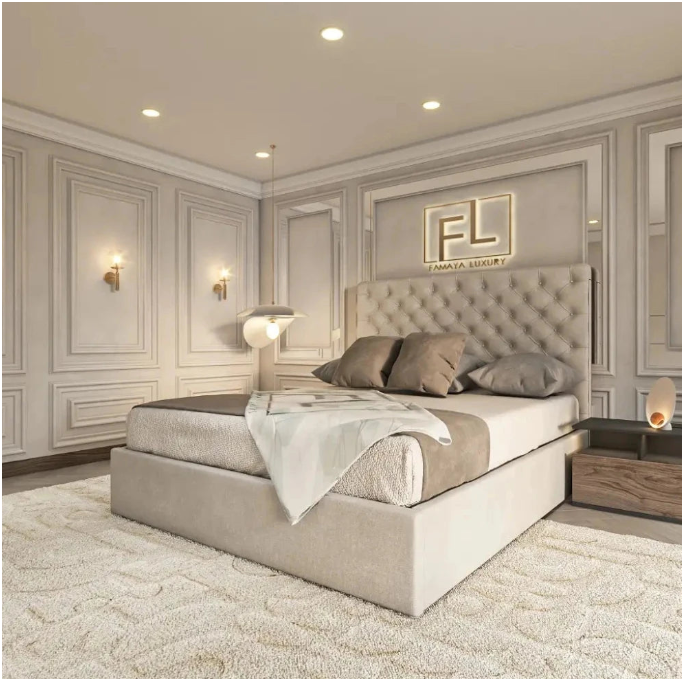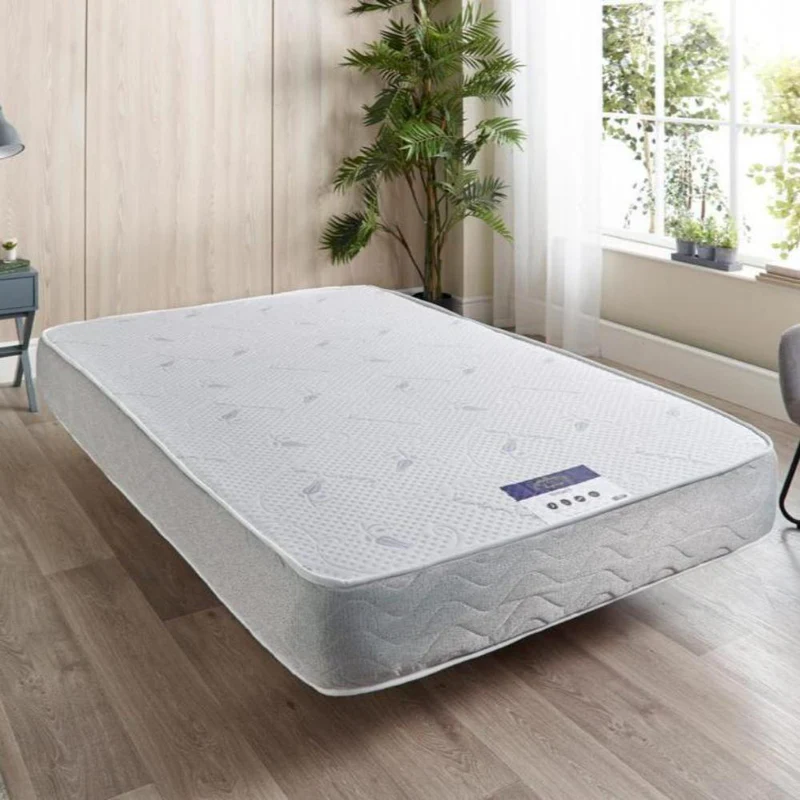
Single Bed Mattress: Comfort Meets Support in Every Layer
Let’s face it…
Buying a mattress can feel overwhelming. So many types. So many prices. And if you’re looking for a single bed mattress, it gets even trickier.
But don’t worry — you’re in the right place.
This guide will walk you through everything you need to know. No jargon. No fluff. Just clear, helpful advice so you can make the best choice.
Let’s dive in.
What’s a Single Bed Mattress?
First things first.
A single bed mattress is one of the most common mattress sizes in the UK. It measures 90cm wide by 190cm long.
It’s perfect for:
-
- Kids moving to their first big bed
- Teenagers who need more space than a toddler bed
- Adults who live solo or need a mattress for a small room
If you've got a box room, guest room, or need to save space, this size works beautifully.
Why Size Really Matters
You might think, “It’s just a mattress. How much difference can size make?”
A lot, actually.
UK Mattress Dimensions
Here’s a quick look:
-
- Single: 90 x 190 cm
- Small double: 120 x 190 cm
- Double: 135 x 190 cm
A single bed mattress gives you enough room to stretch, roll, and rest — if you’re not sharing it.
Is a Single Bed Big Enough?
For one person? Yes.
For two? Definitely not.
For growing kids? Absolutely.
If you’ve got limited space or you’re shopping for one, a single mattress is a smart, compact choice.

Types of Single Bed Mattresses
Not all mattresses are built the same.
And finding the right type makes a big difference in how well you sleep.
Let’s break it down.
1. Memory Foam
Soft, molds to your body, and absorbs movement.
You don't feel your partner tossing or turning — not that you'll be sharing a single bed, of course!
Great if you want that “sink-in” comfort and don’t mind a warmer feel.
2. Pocket Sprung
These have individual springs sewn into fabric pockets. They move independently and offer solid support.
They’re also more breathable, which means a cooler night’s sleep.
Perfect if you tend to get warm or change positions often.
3. Hybrid
This one mixes it up — foam layers on top of springs. You get that cushioned feel plus extra bounce and support.
It’s ideal if you want a balanced mattress that does it all.
4. Latex Mattresses
Latex is naturally hypoallergenic and highly breathable. It's more responsive than foam and cooler, too.
Great for hot sleepers or anyone with allergies. It also tends to last longer, but comes at a higher price.
5. Rolled Mattresses (Bed-in-a-Box)
These come vacuum-packed and rolled up for easy delivery. Super handy if you're dealing with narrow hallways or stairs.
Just unbox, let it expand, and you’re good to go in a few hours.
Many memory foam and hybrid mattresses now come this way, and the quality can still be excellent.
Which One Is Best for You?
Here’s a quick cheat sheet:
-
- Side sleeper? Memory foam.
- Back sleeper? Hybrid or medium-firm sprung.
- Hot sleeper? Pocket sprung or latex — they’re cooler.
- Budget shopper? Foam is often more affordable.
- Need easy delivery? Go for a rolled or boxed mattress.
Everyone's different, so think about your sleep habits, your body, and your room before picking one.
Comfort vs. Support
Here’s a common myth:
“The softer the mattress, the better the sleep.”
Not always true.
You need both comfort and support.
Soft, Medium, or Firm?
-
- Soft: Sinks in more, great for lighter sleepers.
- Medium: Balanced feel, works for most people.
- Firm: More support, better for heavier builds or back sleepers.
Match to Your Sleep Style
Think about how you sleep:
-
- Side sleepers often love soft to medium.
- Back sleepers go for medium-firm.
- Stomach sleepers need a firmer feel to avoid arching their backs.
Your mattress should support your spine, not bend it out of shape.
At Famaya Luxury Beds, we offer a carefully selected range of single bed mattresses tailored to different sleep styles, so you can find the perfect match for how you rest.
Best for Kids or Teens?
Kids grow fast.
And that means their mattress needs change just as quickly.
They need something comfy — but also something supportive, durable, and clean.
Let’s break it down.
What Growing Bodies Need
-
- Support for their spine
- Comfort to help them sleep through the night
- Durability for years of tossing, turning, and jumping
Look for medium support and breathable fabrics.
Avoid cheap foam that flattens after a few months. It's not worth the short-term savings.

Hygiene Tips
Kids can be messy — spills, sweat, accidents.
It's all part of growing up.
-
- So choose a mattress that’s easy to keep clean.
- Use a washable mattress protector.
- And go for hypoallergenic covers to reduce dust and allergens.
Pro tip?
Rotate the mattress every 3 months for even wear and a longer life.
Picking the Right Firmness
Not too soft. Not too hard.
-
- For most kids and teens, a medium-firm mattress is the sweet spot.
- It gives enough support for their spine, but enough comfort for deep, restful sleep.
- Memory foam and hybrid mattresses often work well here.
Room to Grow
If your child is nearly a teenager (or already tall), make sure the mattress size won’t be too small in a year or two.
A standard single (90 x 190 cm) fits most kids well into their teens.
But for taller teens, a small double might be worth considering — if space allows.
Safety First
-
- For younger kids, especially under 5, avoid mattresses that are too soft.
- They can be a suffocation risk and don't give enough support.
- Also, make sure the mattress meets UK safety standards and fire regulations.
- Always check the label before buying.
Best for Small Spaces
Short on room? Single bed mattresses are your best friend.
They work brilliantly in:
-
- Small bedrooms
- Guest rooms
- Student housing
- Rental flats

Storage-Friendly Picks
Try a single mattress on an ottoman or divan bed base. It gives you built-in storage underneath.
You get comfort and space-saving in one smart setup.
Budget-Friendly Choices
Mattresses don’t need to break the bank.
Here’s what you can expect:
What You Get for £100–£300
-
- Basic memory foam or sprung
- Comfortable for kids, teens, and light adults
- Often with shorter warranties (1–5 years)
When to Invest More
If you’re buying for an adult or need long-term comfort:
Spend a bit more.
Look for quality materials, longer warranties, and trusted brands.
A mattress is something you use every night. It’s worth getting right.
Signs You Need a New One
Still sleeping on an old mattress?
Here’s how to tell if it’s time for an upgrade:
1. Waking Up Sore?
That’s a red flag.
A good mattress should help you wake up refreshed, not stiff and achy.
2. Mattress Sagging or Noisy?
If it dips in the middle or creaks with every move, it’s done its job. Time to replace it.

3. Feeling More Tired Than Usual?
Bad sleep affects everything — focus, energy, mood.
Sometimes, it's not you. It's your mattress.
Please don't wait until it's unbearable. Replace it when these signs show up.
Care Tips for Longer Life
You’ve picked the perfect mattress. Now take care of it!
1. Rotate It
Turn it every 3 months to avoid dips and dents.
2. Keep It Clean
Vacuum it every few weeks.
Use a protector to stop stains and allergens.
3. Let It Breathe
Air it out when you change the bedding.
It stops moisture build-up and smells.
A little care goes a long way in keeping your mattress comfy for years.
Final Thoughts
Buying the right single bed mattress doesn’t need to be confusing. It just needs to match your body, your room, and your budget.
Take your time. Try not to rush. Because a great mattress isn’t just furniture. It's your comfort. Your rest. Your reset.
And trust us — when you find the right one, you’ll feel the difference every night.
At Famaya Luxury Beds, we're here to help you find that perfect fit, with quality you can trust and comfort you can feel.
FAQs
1. What is the best single bed mattress in the UK?
That depends on who's using it. For kids, go for mid-range foam. For adults, try a hybrid with good support.
2. How much should I spend on a single bed mattress?
Anywhere from £150 to £600, depending on quality, brand, and use. For long-term comfort, aim for the mid-to-high end.
3. Is memory foam good for a single bed mattress?
Yes, especially for side sleepers or kids. It offers great comfort and reduces pressure on joints. Just make sure it's breathable.
4. How long does a single bed mattress last?
On average, 6 to 10 years. But it depends on how often it's used and how well it's maintained.
5. Can adults sleep on a single bed mattress comfortably?
Absolutely — as long as they sleep solo and the mattress offers the right support. For heavier adults, go for medium-firm or firm.
6. What firmness is best for a single bed mattress?
It depends on how you sleep. Side sleepers prefer softer, while back and stomach sleepers usually need medium-firm to firm support.
7. Do single bed mattresses come rolled or flat-packed?
Many now come rolled in a box for easy delivery. Just unbox, let it expand, and it’s ready to use within a few hours.



